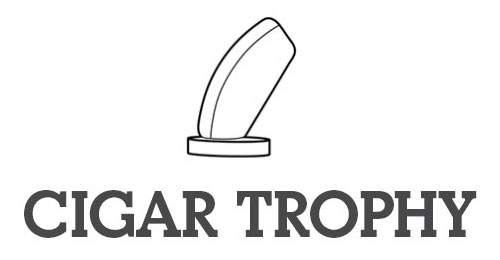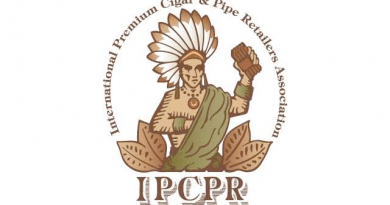Cigar Safari at Drew Estate–Part Two
Day Two of Cigar Safari began with the chirping of birds. OK, I’m a big city guy and my day usually begins with the sound of the trash truck on Mondays and school buses cruising by each weekday. So, imagine my surprise to awake to the sound of birds. What kind of birds you, you ask gentle reader? Nicaraguan birds, of course! OK, I don’t have a clue what kind of birds. Birds we don’t have where I live.
After waking up and getting ready for another day of Cigars 101, Smokey Butts and I headed to the lounge area before breakfast. About half of our group was already there partaking in another wonderful Drew Estate cigar. I chose a Tabak Especial Negra Maduro to start my day. This is a great breakfast/dessert cigar. A bit of sweetness combined with infused coffee is a fine way to start your morning. For those readers who don’t like sweet cigars, give this one a try. It has just a hint of sweetness.
About 20 minutes into my morning cigar, it was time for breakfast. The group headed down to the rotunda area and enjoyed another fine meal. Our breakfast included scrambled eggs, toast, black beans and rice, and fresh orange juice. For those who are worried about the food in Nicaragua, don’t. Every meal was exceptional. I highly suggest trying anything and everything as the food is amazing.
After breakfast, we took a trip to a tobacco field on the outskirts of Esteli. On our way, I lit a Liga Privada No. 9 as my second cigar of the day. Drew Estate does not own any tobacco fields but instead contracts with local farmers to grow their Nicaraguan tobacco. Drew Estate also purchases tobacco from a variety of other sources. In the field, we learned about the importance of soil content. Esteli is in a valley near an area where volcanos were once active. After hundreds of thousands of years, the volcanic ash turns into the perfect soil for growing tobacco. The soil is very dark, almost black in color, and is very hard when dry. When wet, the soil sticks to your shoes like clay.
Prior to planting the tobacco plants in a field, five seeds are planted in a container in a nursery. The seeds are tiny. Really tiny. Smaller than the ball of a ballpoint pen. You can hold thousands of seeds in your hand. As the seeds grown into seedlings, the four weakest of the five seedlings are removed and discarded. The strongest seedling then grows for 45 days. After 45 days, the seedling is hand planted in the tobacco field with thousands of other seedlings.
After the seedling grows into a full sized tobacco plant, workers cut the leaves off from bottom to top at seven day intervals. The bottom leaves, also known as sand leaves, are cut and discarded. The sand leaves are not suitable for cigars. The lower leaves are larger and more hardy than the upper leaves. They are larger because they must grow larger to absorb the sun. As the leaves are cut from lowest to highest, the lower leaves grow larger still to continue to absorb the sun.
Next, we walked to the curing barn located next to the tobacco field. The curing barn is a huge wooden barn that is a couple of stories high and deep, really deep. Inside the barn are thousands of wooden racks to hold the tobacco while it cures. The tobacco leaves are tied together in hands and then hung in the curing barn for 45 to 90 days. A constant temperature and humidity in the curing barn ensures the tobacco cures correctly. The temperature is maintained by lighting numerous small fires when it is too cool and opening wooden windows when it is too warm. The humidity is maintained by placing water in the curing barn when the humidity is too low.
After the barns, we traveled into Esteli to Drew Estate’s fermentation facility. A byproduct of tobacco fermentation is ammonia which was evident when we entered the facility. We each received a breathing mask as the smell can be a bit uncomfortable. In the front of the facility, the leaves are sorted by feel and using a visual inspection. The leaves are then bundled into hands and taken into the fermentation room and stacked on pallets roughly 4′ x 10′. Fermentation continues for months or years depending on the type of tobacco. Periodically, the piles of tobacco, or pilon, are restacked so fermentation is equal throughout the process. In the third room of the fermentation facility was a storage room. The storage room contained cubes of cured and fermented tobacco that is aged in this room.
We then drove to a construction site in Esteli across the street from the Drew Estate main building. At the construction site, Drew Estate is building a new fermentation and storage facility. The The facility is huge, at 70,000 square feet and will allow Drew Estate to increase production. The new facility was at the early stages but was clearly a step up from their current facility.
We returned to the Drew Estate main facility and had lunch on the rotunda. We had chicken, beef, and black beans and rice as the entree. Hmm, yes, we have black beans and rice at every meal. Repetitive? Yes. Damn good? Yes! For dessert, we had a very tasty dish of flan. To drink, I had some kind of fresh juice that seemed to be orange and mango juice mixed together.
After lunch, we toured Drew Estate’s main cigar production facility. We first visited the administrative offices and met the Chief Financial Officer for Drew Estate in Esteli, who sang us a nice tune. We followed with a tour of the entire facility including rolling, packaging, storage, quality control, and shipping. I was amazed at the number of people that touch every cigar. I’ve heard through the years that over 200 hands touch every cigar. I can now attest to this. Making cigars is truly a manual labor activity. As an aside, I am a bit of a germaphobe and watching so many people touch each cigar was a bit, well, disturbing. Ick! The only way to get over my phobia is to smoke more cigars!
After touring the Drew Estate facility, we headed to a blending room for a blending session. This was our chance to take everything we had learned so far and create our own cigar blend. We received a brochure that walked us through the blending process. Along one wall was a sample of the different varieties of tobacco we could use to make our blend. We had an opportunity to smell, touch, and smoke every kind of tobacco Drew Estate uses in their blends from a variety of countries. After experimenting with the different types of tobacco, each of us completed a form documenting our blend. We selected leaves for the wrapper, binder, and filler. We then reviewed our blends with an expert. In my case, I was sent back to the drawing board as my initial blend was pretty weak. Literally. I designed a mild cigar when I intended to blend a medium bodied cigar. I went back to the tobacco bins and improved my blend, I hope. We turned in our final blends so Drew Estate could produce the cigars for us.
As stated earlier, there were many different tobaccos available for for us to blend. One particular tobacco was a surprise and a treat. The tobacco was called Kentucky BBQ and was the most unique tobacco I have every smelled. The leaf smelled like BBQ sauce. Yes, BBQ sauce. I didn’t have enough guts to add this tobacco variety to my blend but I suspect I’ll see this in a future Drew Estate cigar.
We ended the day of tours with a visit to Subculture Studios, Drew Estate’s on-site graphics design and production facility. Jesse, the head honcho and all around great guy, gave a wonderful overview of the facilities products, goals, and purpose. We received a five pack of special cigars that included some blends only available at Drew Estate in Nicaragua, as well as a few samples of cigars they are testing.
Next, we had some free to time to relax before dinner. I smoked a test cigar for their new Herrara Esteli line of cigars. The cigar was very good in the medium to full bodied category.Smokey Butts and I hung out with the rest of our group until dinner. Dinner was another culinary treat, including chicken, rice, mashed potatoes (amazing), stuffed bell pepper (Truly amazing. No idea what was in it). After dinner Marvin Samel gave a short speech and recognized a few key employees. He then called up two of our Cigar Safari group members and surprised them with a birthday cake. And we ended dinner with a mariachi band that played a handful of songs.
After dinner we retired to the common area and enjoyed, yes, another cigar from the cornucopia of cigars in the lounge. I enjoyed my second Herrera Esteli of the day.
Click Here for Part Three of C.Gar and Smokey Butts’ Cigar Safari trip. . .




Pingback: Cigar Safari at Drew Estate--Part Two
Great coverage! Thanks for the support.
Sure thing Johnny. We had a great time. This was a truly exceptional experience.
Pingback: Cigar Safari at Drew Estate--Part One